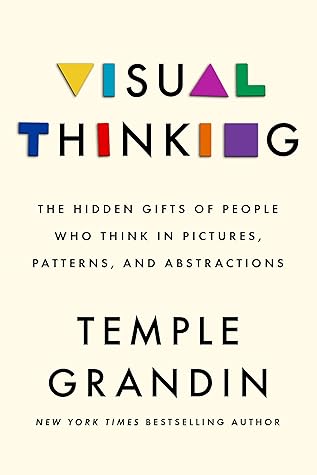More on this book
Community
Kindle Notes & Highlights
the spatial visualizer who sees in patterns and abstractions. I first became aware of this distinction while working with various kinds of engineers, machinery designers, and welders.
people who are object visualizers like me, who see in pictures, and the spatial visualizers, who see the patterns. Think of it this way: the object thinkers build the trains, and the spatial visualizers make them run.
I stood on an overhead catwalk and looked at all the complicated conveyors and exclaimed to no one, “We don’t make it anymore!” This is the price we have paid for removing most hands-on classes from our schools, such as shop, welding, drafting, and auto mechanics. The kids who should have grown up to invent this equipment are often considered poor performers, academically or behaviorally, and are shunted into special education. But many of them are simply visual thinkers who are being screened out because the current curriculum favors verbal, linear thinkers who are good at taking tests. The
...more
Imagine a world with no artists, industrial designers, or inventors. No electricians, mechanics, architects, plumbers, or builders. These are our visual thinkers, many hiding in plain sight, and we have failed to understand, encourage, or appreciate their specific contributions. One reason I was driven to write this book is that the loss of skills in this country terrifies me. And it is entirely preventable, if only we stop screening out the very people who could save us.
It turns out that algebra is a barrier that keeps some students from completing high school or a community college technical degree. These are the visual thinkers who can invent machinery but can’t solve for x, and we are screening them out. Next, we’ll look at how the crisis in education leads to an unemployment or underemployment crisis, abetted by prejudices about the trades and community colleges.
Visual thinkers, on the other hand, see images in their mind’s eye that allow them to make rapid-fire associations. Generally, visual thinkers like maps, art, and mazes, and often don’t need directions at all. Some visual thinkers can easily locate a place they’ve been to only once, their internal GPS having logged the visual landmarks. Visual thinkers tend to be late talkers who struggle with school and traditional teaching methods. Algebra is often their undoing, because the concepts are too abstract, with little or nothing concrete to visualize. Visual thinkers tend to be good at arithmetic
...more
In the most basic terms, there are two kinds of visualizers. “Object visualizers” like me see the world in photorealistic images. We are graphic designers, artists, skilled tradespeople, architects, inventors, mechanical engineers, and designers. Many of us are terrible in areas such as algebra, which rely entirely on abstraction and provide nothing to visualize. “Spatial visualizers” see the world in patterns and abstractions. They are the music and math minds—the statisticians, scientists, electrical engineers, and physicists. You’ll find a lot of these thinkers excel at computer programming
...more
I didn’t really find my tribe until I started working on construction projects. The engineers and welders I worked with were generally visual thinkers like me. It explained why we collaborated so well and got along. We spoke the same language. It was an arena where all that mattered was our skills, not how we looked, our background, our college education, and so on. My weirdness didn’t matter once they saw my work.
I am aware that I may be missing certain experiences that are emotion-based, but for me, thinking that is less impacted by emotion is likely focused more on concrete problem-solving. Most autistic people, regardless of their thinking style, rely more on logic than emotion. It may be another genomic trade-off, but I don’t bring a whole lot of emotional baggage to any situation. I don’t get caught up in the emotion; instead, my mind starts to problem-solve. That’s one advantage.
Halsey explained that “engineers tend to overthink” and do poorly when an innovative solution needs to be determined quickly. “They don’t like to operate outside their comfort zones. . . . They’re very good at their particular specialties but not so good at executions—at translating ideas into things.” My interpretation is that the truck mechanics were more likely to be object visualizers whose abilities to see it, build it, and repair it were fused. When we say people are good with their hands, it’s this exact melding of skills: it’s as if they see with their hands. The engineers are abstract
...more


